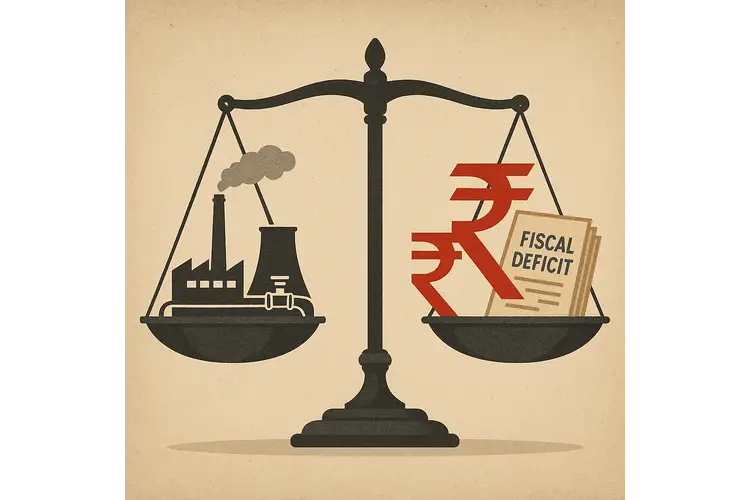Core Industries
The release of the Index of Eight Core Industries (ICI) for February 2025, alongside fiscal deficit data for April 2024 to February 2025, offers a sharp lens into India's current macroeconomic conditions. These indicators critically influence investor sentiment, policy direction, and growth expectations. The ICI, which tracks performance across coal, crude oil, natural gas, refinery products, fertilizers, steel, cement, and electricity, accounts for about 40% of the Index of Industrial Production (IIP). In February, core sector growth slowed to 2.9%, from 5.1% in January, signaling a clear loss of momentum. While Fertiliser, Steel and Electricity showed positive momentum, energy related sectors and Cement dragged the growth.
This deceleration was primarily driven by:
- Crude Oil: Output declined due to aging fields and lower performance from major producers such as ONGC.
- Natural Gas: Production was impacted by operational disruptions, maintenance work, and project delays.
- Refinery Products: A significant contraction occurred, likely due to global supply chain disruptions from U.S. sanctions on Russian oil, along with higher costs of crude imports from the Middle East that pressured refining margins.
Given the strong positive correlation (0.90) between core sector growth and GDP, such weakness often precedes softer GDP prints, particularly in manufacturing- and infra-led quarters like Q4.
Fiscal Deficit
India’s fiscal deficit stood at ₹13.47 trillion for the April–February period—85.8% of the revised full-year target of ₹15.69 trillion—up from 74.5% in the same period last year. While capital expenditure remained robust at ₹8.12 trillion, the limited fiscal headroom for March 2025 constrains the government's ability to introduce further stimulus without breaching its 4.8% of GDP target.
Implications for the Economy
- Investor Sentiment: The combination of industrial softening and fiscal tightness may dampen market confidence, especially in infrastructure, capital goods, and energy sectors.
- Monetary Policy Outlook: Sluggish industrial activity and stable inflation may prompt the RBI to maintain an accommodative stance, but constrained fiscal capacity limits coordinated policy action.
- Growth Outlook: The high correlation between core sector performance and GDP suggests that Q4 FY25 growth could moderate unless offset by resilience in private consumption and services.

